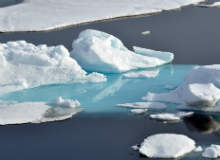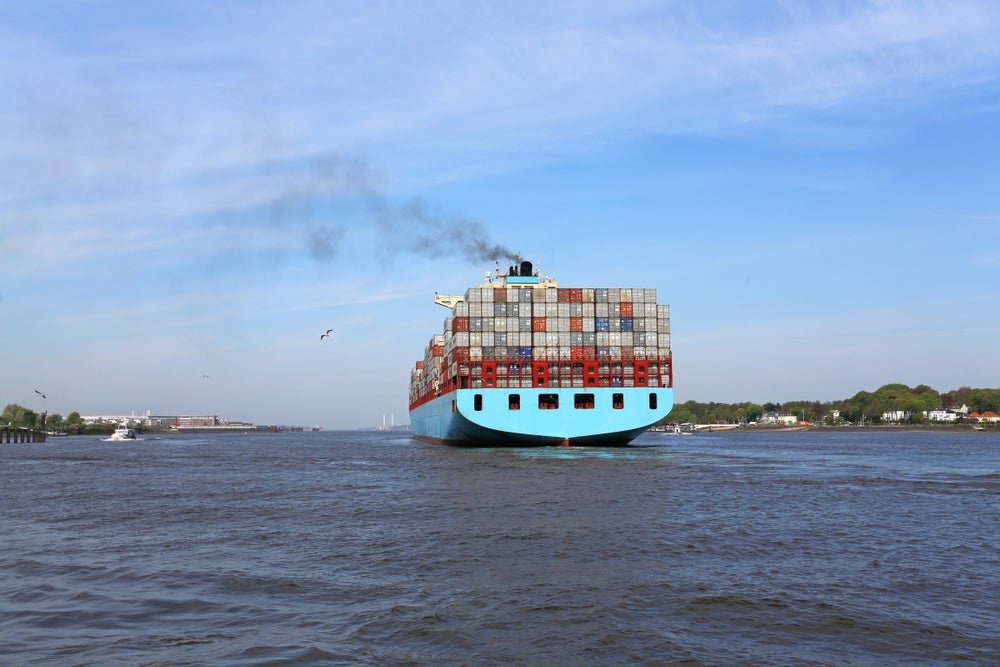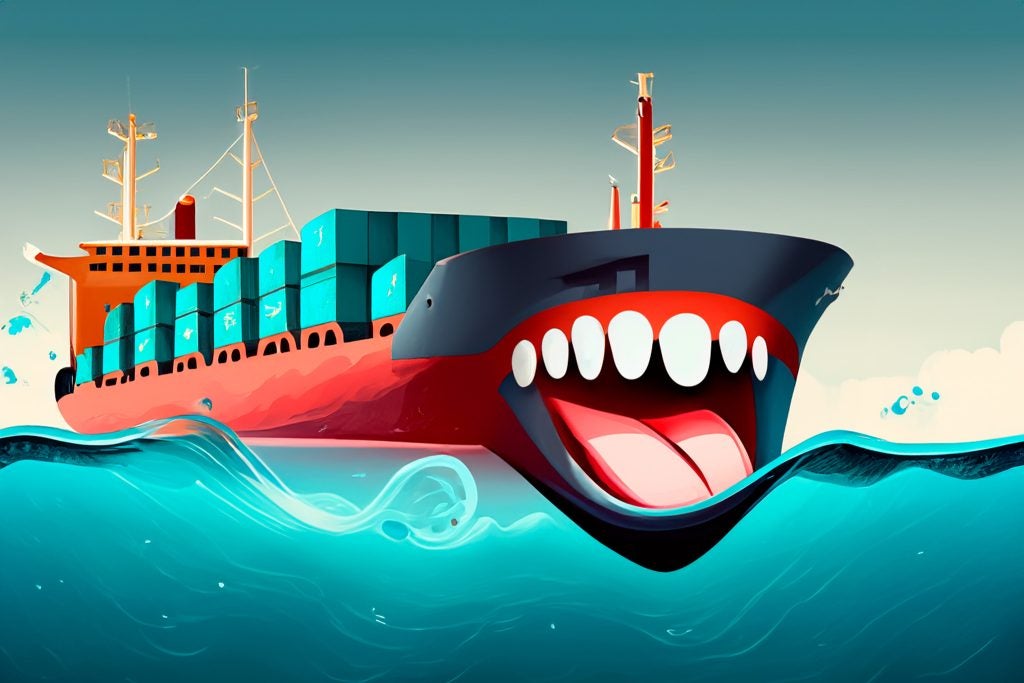
Earlier this year, a group of NGOs called for the phase out of heavy fuel oil used in ships navigating into Arctic waters. But despite the fuel’s known threats to the Arctic environment, the EU stopped short of pushing for a ban on what is considered to be the worst climate forcing agent in shipping.
In February 2016, days before a meeting of the Arctic Council, a group of 15 non-governmental organisations (NGOs) wrote an open letter to Ambassador David Balton of the US State Department to petition the ban of heavy fuel oil (HFO) in Arctic waters. The letter, signed by Earthjustice, Clean Air Task Force, WWF, Transport & Environment and Ocean Conservatory among others, warned of the “highly imprudent” use of HFO by vessels travelling to Arctic marine waters.
A few months later, the International Maritime Organisation (IMO) – the body responsible for preventing pollution from ships – was called on by eight NGOs in a renewed effort to enforce a complete ban on the use of HFO. But despite their efforts, as well as public pledges from both US President Barack Obama and Canadian Prime Minister Justin Trudeau to address HFO risks, the ban remained elusive.
In particular, it was the European Commission’s failure to push for the ban that left campaigners dismayed.
Protecting the vulnerable Arctic environment
The issue is not being completely ignored however. While holding back from openly calling for a HFO phase-out, the EU addressed threats posed to northern waters in its new integrated policy for the Arctic, adopted in April.
Furthermore IMO’s Polar Code, to come into force in 2017, reiterates an already existing ban on heavy fuel oil in the Antarctic, and a new 0.5% cap on sulphur content in Emission Control Areas (ECAs) is currently being debated.
How well do you really know your competitors?
Access the most comprehensive Company Profiles on the market, powered by GlobalData. Save hours of research. Gain competitive edge.

Thank you!
Your download email will arrive shortly
Not ready to buy yet? Download a free sample
We are confident about the unique quality of our Company Profiles. However, we want you to make the most beneficial decision for your business, so we offer a free sample that you can download by submitting the below form
By GlobalDataBut the progress made in these other areas of environmental legislation has managed to reinforce the question: why does a ban on HFO remain intangible in the Arctic?
Heavy fuel oil, also known as bunker fuel, is a cheap, residual product currently representing the staple fuel for marine engines.
The combustion of bunker fuel is particularly heavy in black carbon, cited as the second most dangerous man-made agent of climate change after CO2, as well as nitrous and sulphur oxides, CO2 and particulates.
“Black carbon is a strong climate forcing agent, and when it is deposited on ice it reduces its capacity to reflect the sunlight, so it absorbs the sunlight and warms up the surface that it is on,” says Faig Abbasov, aviation and shipping officer at Transport & Environment, one of the organisations campaigning for a HFO ban.
Andrew Dumbrille, senior specialist in sustainable shipping for WWF Canada, agrees: “It’s the worst of the worst when it comes to marine fuels for generating those noxious emissions.”
WWF Canada currently works in partnership with the Global Arctic Programme to phase out the use of HFO in the Arctic by 2020.
Apart from its toxic emissions, an equal concern is the high risk of spills due to mishandling or ship accidents.
“If HFO is spilled during an accident in the Arctic, it has a particular, unique characteristic in that it emulsifies on the ocean surface,” Dumbrille explains.
The three main techniques of cleaning up spilled fuel – dispersion, in-situ burning and mechanical recovery – have very little success in cleaning up emulsified oil on the ocean surface.
The impacts of a spill are also magnified by a significant response gap in the Arctic, where accident intervention times can take up to a few weeks due to tricky navigation.
“That means that it will persist quite a bit longer on the surface than diesel or LNG and it will impact shorelines, marine mammals and birds at a higher rate than the other fuels. Especially for fur-bearing animals, it carries a lot of harm because it can cause hypothermia and death,” he says.
In recent years, Arctic waters have seen a spike in shipping traffic, expected to grow due to increased worldwide demand for consumer goods and the continuing shrinkage of summer sea ice in the region.
Arctic vs Antarctic: differences keep HFO ban at bay
The IMO, alongside other industry regulatory bodies, are fully aware of the particular dangers of heavy fuel oil.
Under the MARPOL Annex I legislation, HFO was be banned in the Antarctic since 2011, both as a combustion fuel and as transported cargo.
The IMO’s Polar Code, a legislative document ensuring the protection of polar waters entering into force on 1 January 2017, acknowledges the similarities between the Arctic and the Antarctic, but it recognises that the risk level, and thus the mitigation measures needed, are different between the two poles.
The Code does however mention that “ships are encouraged not to use or carry heavy fuel oil in the Arctic”, but it stops short of imposing any other limitations.
Unlike the uninhabited Antarctic, the Arctic is home to over four million people, representing 40 different ethnic groups. Many communities rely on heavy fuel oil for their domestic activities.
“[A HFO ban] is a little politically sensitive in the Arctic, because heavy fuel in the Arctic region is used not only to power the ships but also as fuel to households, by both indigenous and non-indigenous communities living in the North,” says Abbasov.
“So banning every aspect of HFO, both use and carriage as cargo, would be politically sensitive especially for the Russian Federation, which has quite a substantial population living in the North.”
Abbasov also highlights that following the ban the costs to operators navigating in the Arctic would increase since they would be forced to switch to cleaner, more expensive distillate fuels.
On its part, the European Commission published an “integrated European Union policy for the Arctic” in April, which warns that the North is warming at almost twice the global average rate.
The document reiterates that the EU has committed €40m under its 2016-2017 work programme to “Arctic related research”.
However, as Abbasov points out, the document is more of a policy instrument than a strategy for action.
The Commission’s failure to push for a ban on HFO ahead of the 69th meeting of IMO’s Marine Environment Protection Committee left WWF Canada “perplexed”, as Dumbrille put it.
“With the low 0.5% sulphur regulations coming into effect, you would think that the appetite for banning the use of HFO would be much higher amongst the EU and other Arctic states,” he says.
“The only reason that I can think of for them [to avoid it] in their statement is that they are looking for Arctic states to take the lead on their own. But I don’t think that should prevent the EU from making a statement.”
Only three current EU Member States – Denmark, Finland and Sweden – are also Arctic states, which could explain to some extent the EU’s reluctance to interfere in regulating shipping in the area.
Renewed action ahead of MEPC70
The eventual phase out of HFO aboard ships in the Arctic is a multi-pronged approach, and that responsibility ultimately lies with IMO’s Marine Environment Protection Committee (MEPC).
“If the risks to the Arctic are to be eliminated altogether, the use of HFO must be banned; there is no alternative to this,” says Abbasov.
More research needs to be done into the volumes of heavy fuel oil being carried aboard ships as cargo, as well as the destinations, sources and routes of carriage, an initiative the Green Shipping Coalition is currently pushing for.
Once that is better understood, the quickest and most effective way to enforce the ban would be by adding a regulation to MARPLE Annex 1.
As fuel prices start to rise again and environmental regulations become even stricter, Dumbrille thinks there is certainly hope for action from the IMO, especially since this “is not a ‘say no to shipping’ campaign, it’s a ‘say yes to alternative fuels’, away from bunkering.”
WWF Canada, as well as a host of other environmental organisations, has submitted a HFO mitigation paper to the Arctic Council, looking at how to implement the ban – either through IMO regulations, area-based measures, or potentially through the Polar Code.
“That will provide the menu on Arctic states on how to actually tackle this issue,” Dumbrille says.
Meanwhile, both Transport & Environment and WWF are working with member states in drawing up a timetable for the phase out of HFO.
These efforts are being escalated ahead of the MEPC70 meeting in October this year, which is also expected to set an introduction date for the 0.5% cap on fuel sulphur.
“At this meeting of the IMO, you’ll see a signal from the global community on how serious they want to take this issue and developing this work plan will indicate the appetite to moving forwards,” Dumbrille says. “That is the major milestone and a major meeting.”






